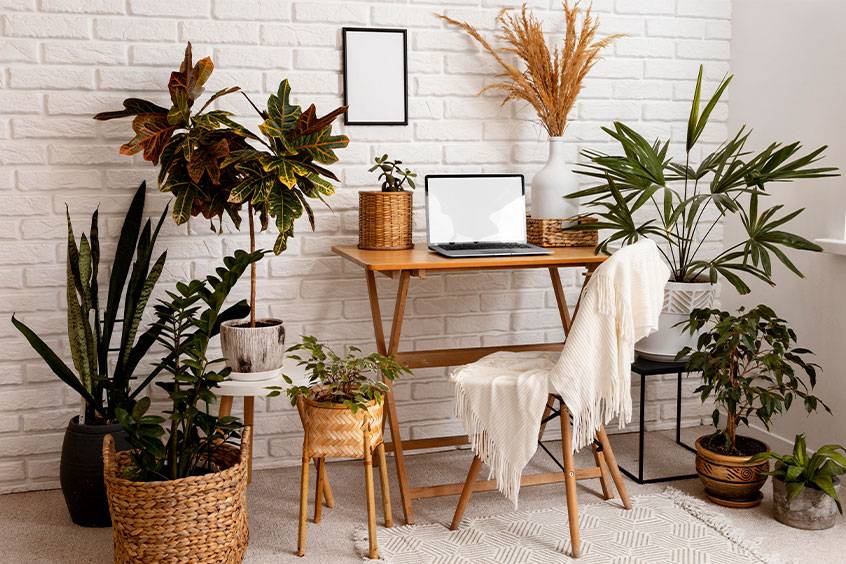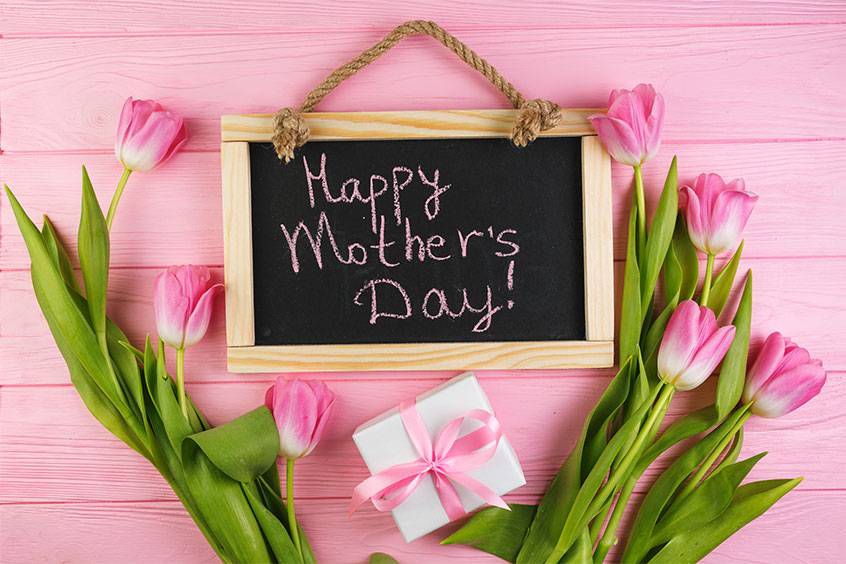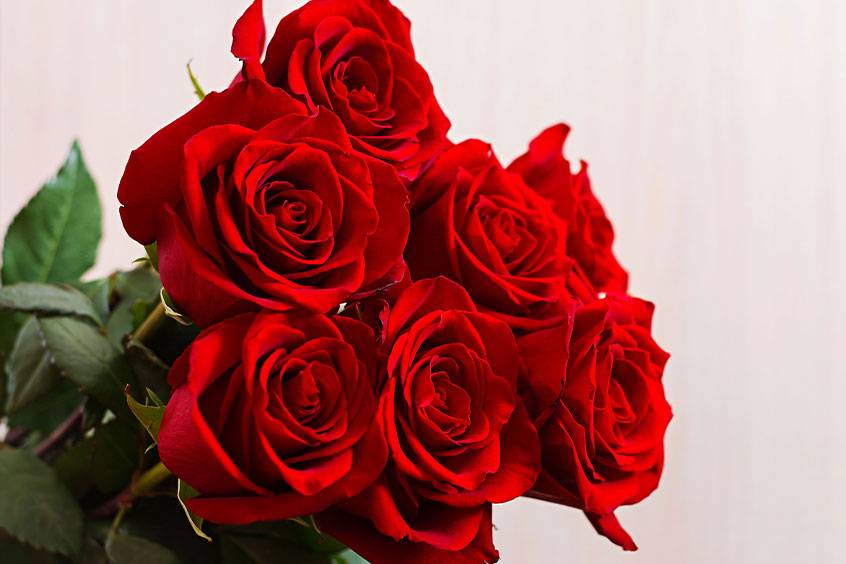
The Blooming Elegance: The Importance of Flowers in Interior Designing
In the realm of interior designing, the incorporation of natural elements can transform a space into an enchanting oasis. Among these elements, flowers hold a special place due to their innate beauty, vibrant colours, and uplifting fragrance. Flowers bring life to an interior, invoking a sense of tranquility, charm, and harmony that artificial decor simply cannot replicate. This article explores the significance of flowers in interior designing, showcasing how these delicate wonders can elevate spaces to new heights of elegance and appeal.
Flowers have the unique ability to breathe life and beauty into any space with their vibrant colors, delicate petals and sweet scents In the world of interior design they are both professional and passionate of the secret weapon, transforming simple buildings into beautiful paradises of beauty and perspective. It’s about entering space with personality, creating situations and evoking emotions. Whether a serene minimalist arrangement or a lively wildflower, flowers are versatile tools that designers use to create a statement in walls Join us on a journey to discover how about floral arrangements art elevates interior design to art, where natural beauty is seamlessly combined with human creativity.
Why do people like floral furniture?
The inclusion of nature in interior design can transform an area into a luxurious oasis. These flowers hold a special place for their natural beauty, bright colors and uplifting fragrance. Flowers bring some of them to life, evoking a sense of peace, beauty and harmony that decorations simply cannot replicate.
Flowers are popular in interior design for many interesting reasons:
• Luxury: Flowers bring a burst of color, texture and natural beauty to interior spaces. They act as natural art, adding instant charm to any room.
• Emotional effects: Flowers can evoke positive emotions and create a sense of well-being. Their presence can lift the mood, reduce stress, and create a more fulfilling life.
• Versatility: Flowers come in a variety of shapes, sizes and colors, making them incredibly versatile for interior design. Whether it’s a small posy by the bed or a huge flower arrangement in the hallway, there’s a flower for every space.
• Variety: Flowers are available in different seasons, allowing you to tailor your decorations to the time of year. Tulips and daffodils appear in spring, while evergreen branches and poinsettias appear in winter.
• Fragrance: Many flowers give off pleasant fragrances, adding a sensuality to the interior design. Scented flowers like rose, lavender and jasmine can give you a pleasant scent.
• Connection with nature: In an increasingly urban world, flowers provide a visual connection to nature. They are reminiscent of our beautiful outdoors and can contribute to peace and balance.
• Customization: The choice of flowers and their arrangement is highly customizable, allowing interior designers and homeowners to tailor decor to their specific tastes and styles.
• Harmony with Other Decor Elements: Flowers can complement various design elements, such as colour schemes, furniture, and artwork. They tie together different components of a room's design.
• Celebration and Special Occasions: Flowers are often used to celebrate special occasions like weddings, birthdays, and anniversaries. Incorporating them into interior decor can infuse a sense of festivity into a space.
• Cultural Significance: In many cultures, certain flowers hold special symbolism or cultural significance. Using these flowers in interior design can honor traditions and convey meaningful messages.
• Biophilic Design: The concept of biophilic design emphasizes the human connection to nature. Flowers and plants are integral to this design approach, creating environments that promote well-being and productivity.
• Ease of Change: Fresh flowers allow for easy and frequent changes in interior decor. You can update the look of a room by simply replacing the flowers in a vase or arrangement.
• Sustainability: With the emphasis on sustainability and eco-friendly design, there is a growing interest in using locally sourced and seasonal flowers, which align with green interior design principles.

What types of flowers are suitable for interior design?
Choosing flowers for interior design depends on your personal style, interior décor and preferences. However, some flowers are particularly suitable for interior design because of their characteristics and versatility. Here are some popular options:
- Roses: Classic and beautiful, roses are versatile and colorful. They add sophistication to any room and work well in both modern and traditional settings.
- Tulips: Known for their simple and elegant beauty, they come in a variety of colors and are perfect for interesting arrangements. They are ideal for bright living spaces.
- Orchids: Orchids are sophisticated and beautiful, making them desirable for high-end interiors. They come in a variety of colors and work well in modern settings.
- Lilies: Lilies are known for being bold and striking. They add a bit of grandeur to a room and are often used in tailored furniture.
- Peonies: Peonies are large lush and fragrant flowers often associated with love and femininity. They are spectacular and attractive flowers.
- Sunflower: Sunflowers are known for their bright happiness. They are ideal for creating a welcoming and warm atmosphere in kitchens and dining rooms.
- Hydrangeas - Hydrangeas with full, clustered flowers add a little rustic charm. They are ideal for creating comfortable and cottage style rooms.
- Daisy: Daisy is easygoing, fun and versatile. They are great for informal situations, like a kitchen or nursery.
- Carnations: Carnations come in many colors and last a long time. It is often used to create some color in floral arrangements.
- Chrysanthemums: Chrysanthemums give shapes and colors. It is commonly used in more traditional and standardized systems.
- Baby Breath: This delicate interlocking flower complements the other flowers in the arrangement. It adds an airy, romantic feel and is often used in weddings.
- Gerbera Daisies: Gerbera daisies are known for their bright and bold colors, making them perfect for a playful and modern touch.
- Cymbidium Orchids: Cymbidium orchids are famous for their long, beautiful flowers. It is commonly used in high-end furniture.
- Amaryllis: Amaryllis flowers are large and beautiful and are often used as a bold focal point in indoor arrangements.
- Anemones: Anemones are known for their bright, soft colors. They work best in casual and formal situations.
Choosing flowers should consider factors such as room color, decor, and personal preference. In addition, you can mix and match flowers to create a unique, harmonious arrangement that matches your interior design objectives.
Aesthetics and Visual Appeal
Flowers have an undeniable charm that instantly captivates the human eye. Their natural beauty adds a touch of elegance and sophistication to any interior. The vibrant colours and graceful shapes of flowers can create focal points, add interest to corners, or soften the edges of a room. Whether displayed in vases, floral arrangements, or hanging planters, flowers introduce a splash of nature's magnificence, enhancing the visual appeal of any space.
Emotional and Psychological Benefits
The presence of flowers in an interior setting goes beyond their visual appeal. Scientific studies have shown that flowers have a positive impact on human emotions and psychological well-being. The mere sight of flowers can evoke feelings of joy, calmness, and contentment, reducing stress and anxiety levels. Incorporating flowers into interior design can promote a soothing and relaxed atmosphere, making it an ideal choice for bedrooms, living rooms, and spaces where people seek comfort and solace.

Connection with Nature
In modern urban living, it's easy to lose touch with nature. Flowers bridge this gap, bringing a piece of the outdoors inside the four walls of a building. By including flowers in interior designing, designers establish a stronger connection between occupants and the natural world. This infusion of nature can revitalize the ambiance, providing a refreshing and invigorating environment that fosters a sense of rejuvenation and closeness to the environment.
Seasonal Versatility
One of the fascinating aspects of flowers is their seasonal variety. Each season offers a diverse array of blooms, allowing interior designers to embrace the changing landscape and adapt their designs accordingly. Spring may call for vibrant and fresh blooms like tulips and daffodils, while winter might welcome the warmth of poinsettias and amaryllis. This seasonal versatility adds a dynamic aspect to interior spaces, reflecting the passage of time and creating a unique experience for inhabitants.
Flower delivery services offer the convenience of sending beautiful floral arrangements to loved ones or special events with ease. Whether it's for a birthday, anniversary, or just to brighten someone's day, these services ensure that your chosen flowers reach their destination fresh and vibrant. With a wide variety of bouquets and arrangements available, customers can select the perfect option to suit any occasion or recipient. Many flower delivery services also offer additional features such as personalized messages, same-day delivery, and tracking options, providing peace of mind and flexibility. From classic roses to exotic blooms, flower delivery services make it effortless to express your sentiments and spread joy to those you care about, no matter the distance.
Personalization and Expression
Flowers provide an opportunity for personalization and self-expression in interior designing. Different types of flowers can be chosen to suit individual preferences, styles, and moods. Some may opt for bold and dramatic arrangements, while others may prefer subtle and minimalist displays. The selection of flowers, along with their placement, can tell a story about the occupants and their tastes, turning an interior into a reflection of the people who inhabit it.
Softening and Balancing Features
In some interiors, hard lines, sharp edges, and angular structures can dominate the design. Flowers introduce a softening effect, balancing out these architectural features with their gentle curves and organic shapes. Additionally, flowers can soften the overall atmosphere, making it more inviting and welcoming to guests.
Conclusion
Flowers, with their timeless appeal and multifaceted benefits, play a pivotal role in interior designing. They add a touch of nature's magic, infusing spaces with beauty, positive energy, and emotional well-being. As more and more people seek a connection with nature amidst urban settings, the importance of flowers in interior design will continue to grow. Interior designers are embracing this natural element, harnessing its power to create stunning and captivating spaces that leave a lasting impression on occupants and visitors alike. So, the next time you envision your dream interior, consider the blossoming charm that flowers can bring to your space, and let the floral elegance bloom within your home.





Leave a comment
This site is protected by hCaptcha and the hCaptcha Privacy Policy and Terms of Service apply.